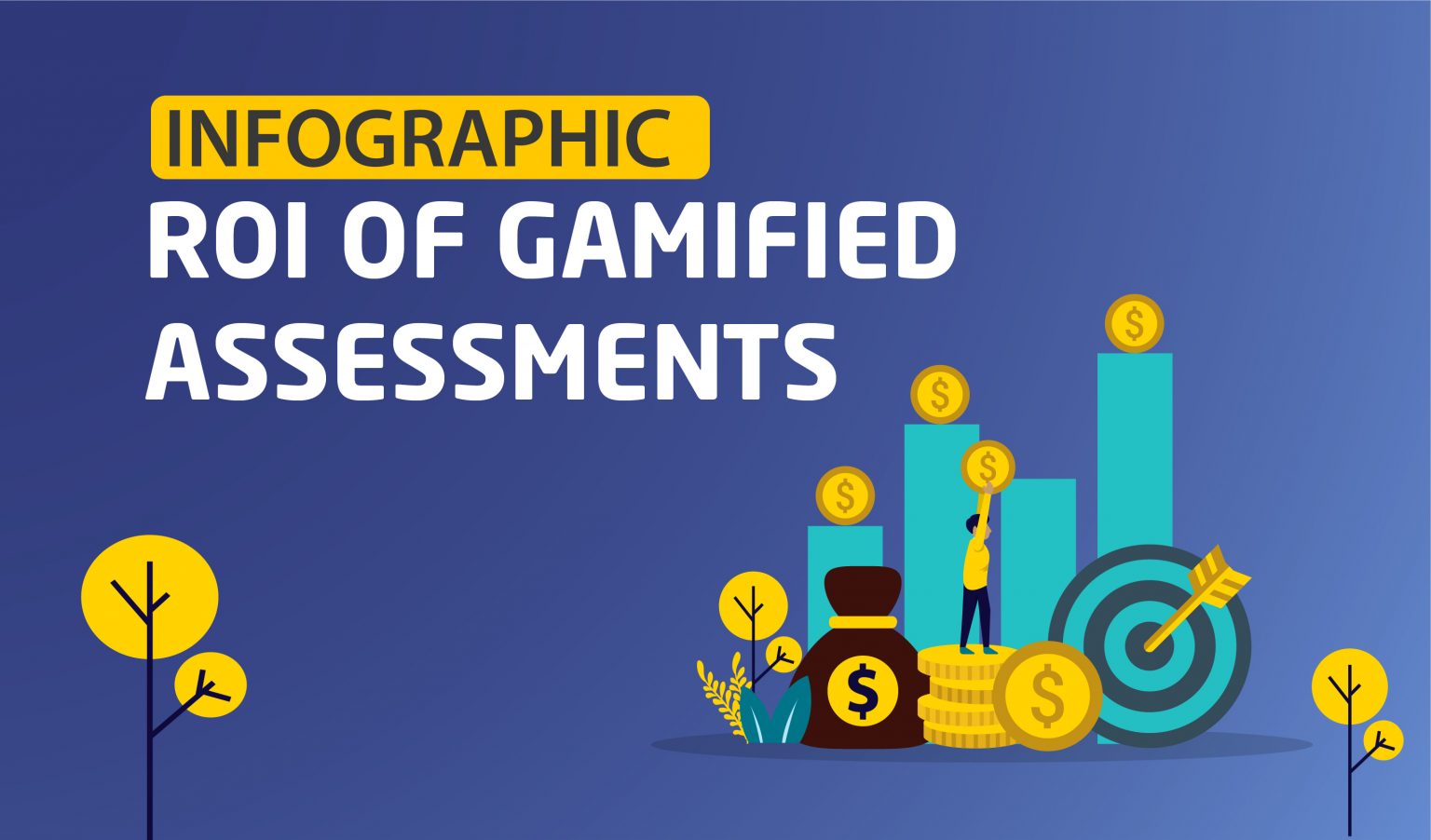Any sort of investment deserves an ROI explanation. So investment in your recruitment process is no exception to this rule. The question, therefore, arises: Is spending on gamified assessments in recruitment justified? Well, the answer is loud and clear ‘YES’! The ROI of gamification in recruitment is worth bringing to the spotlight.
Research reveals that gamified recruitment is an effective way to engage a pool of candidates, quickly identify the top talent, and then on-board them in a fun way. With gamification, employers can make their hiring process more interactive and project an enjoyable company culture, which in turn attracts more quality candidates.
Additionally, gamification allows you to sift through dozens of resumes virtually and pick out highly competent candidates that you might otherwise unwittingly reject due to lack of experience.
For recruiters, we have designed an infographic about the ROI of gamification. Check out it out below!
Gamified assessments can be adapted to test aptitude skills for the job itself, helping hiring managers reduce time to hire. And when rightly designed, they can attract diverse applicants – that wouldn’t have thought of your company before – by giving them more insights into the skills and the tasks required for the job itself.
Plus, recruiters can put gamified assessments to use to test an individual on product knowledge, industry knowledge, creativity and problem-solving skills.
Still skeptical about the ROI of gamification of assessments?
Take the example of the tech-giant, Google. Google employs gamification in its recruitment process to identify top talent with its coding competition for programmers. The participating engineers and developers not only get an opportunity to display their skills as potential hires for the company but also get a chance win up to $50,000 in monetary prizes.
Turning data into information and information into insight– in other words, measuring ROI of gamification of assessments – is essential to communicate the importance of time and dollar investments to your team. Consequently, calculating the return-on-investment of your hiring approach will ensure you’re investing your time, money and other resources to methods that are rewarding for your organization.
